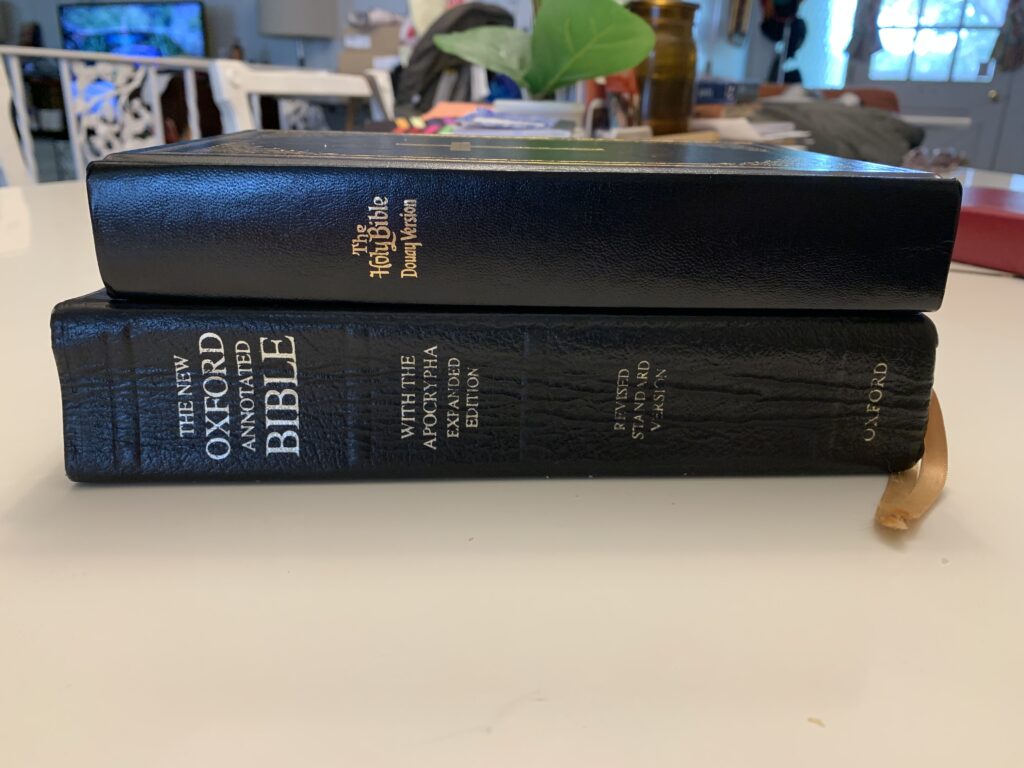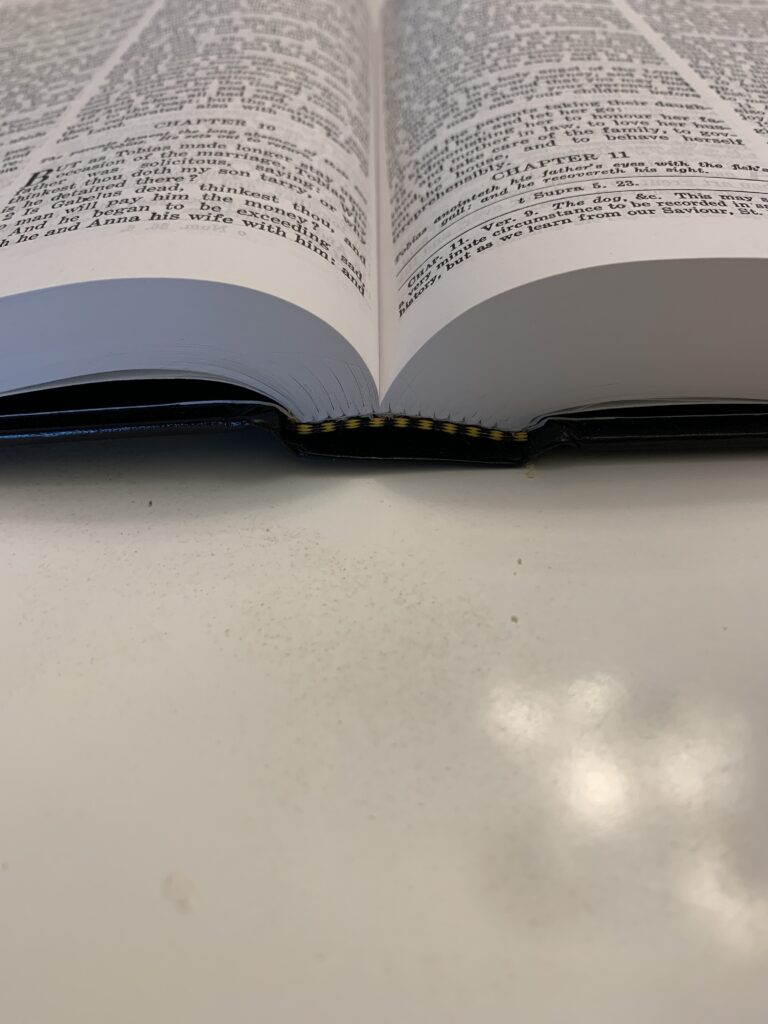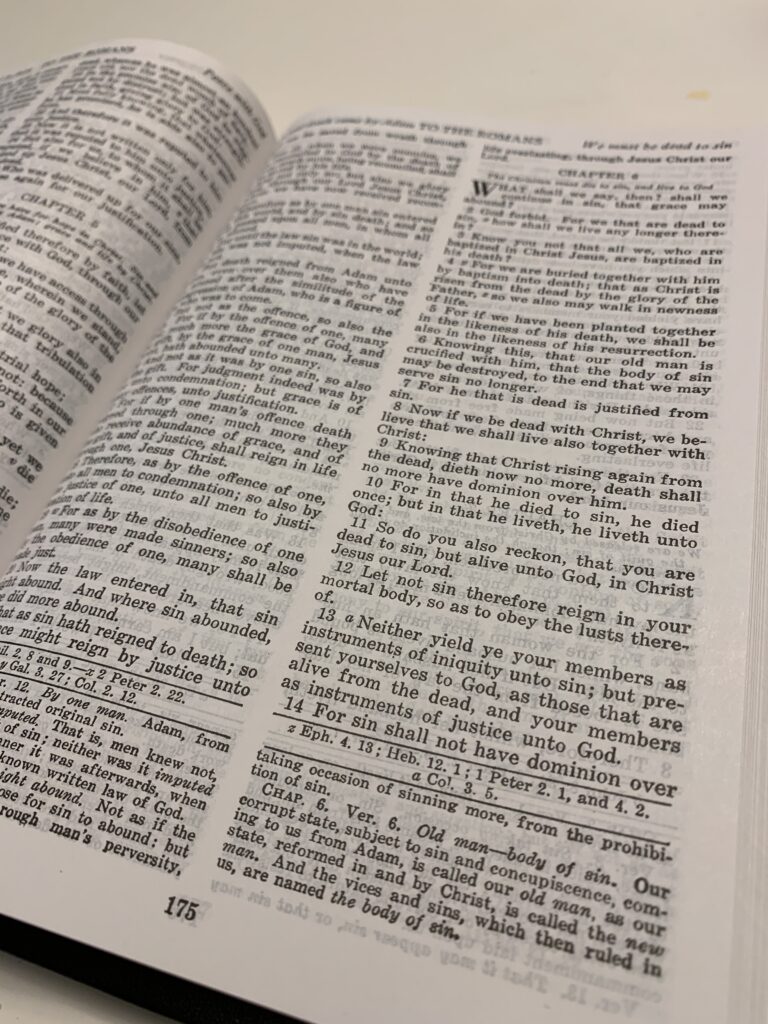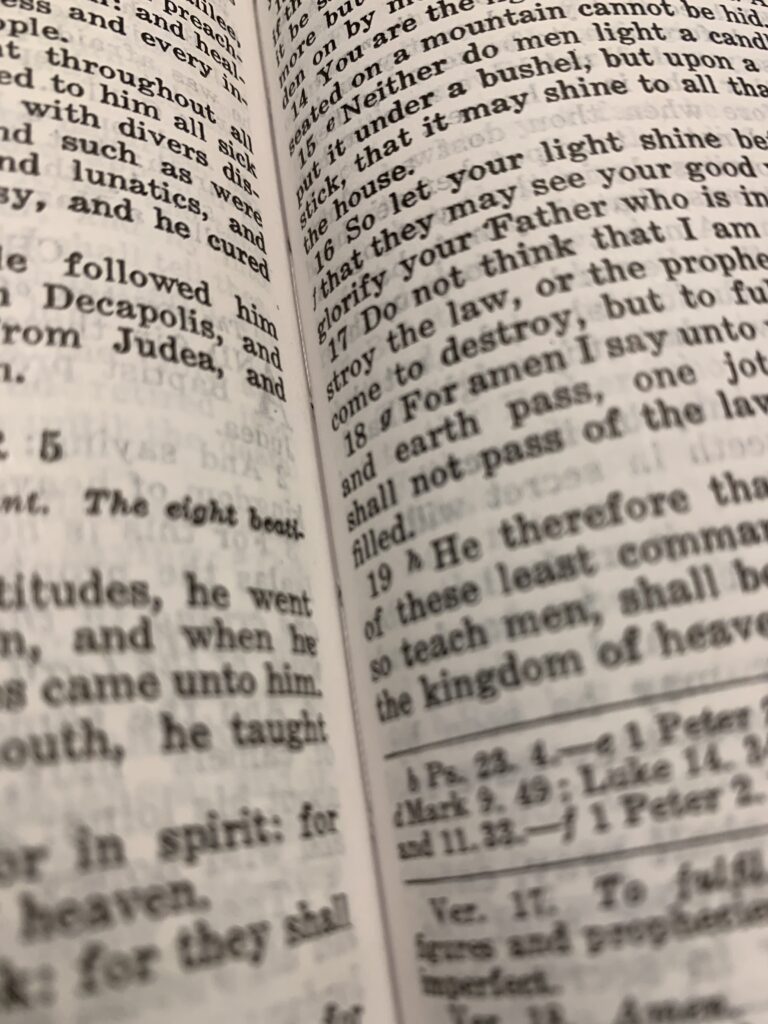
Even 400 plus years after its first publication, the Douay-Rheims translation still remains an option for Catholics today. Although never as popular or having the same impact as the King James Version in the greater English-speaking world, the Douay-Rheims maintains a loyal following and has found renewed interest due to the greater allowances for the pre-Vatican II Liturgy. Last year, Preserving Christian Publications (PCP) reprinted the classic John Murphy Co. – P. J. Kenedy & Sons 1914 edition of the Douay-Rheims, which was based off the Douay text of 1899.

When I saw this edition online, I wondered why another reprint of the Douay-Rheims when there are at least three other publishers who are currently offering it? Reading the listing on the PCP site, I was happy to see their main reasons:
“Indeed, there are paperback editions of this Bible available, as well as hardbound editions in pocket size, standard size & large size. We do not want to belittle any of these editions insofar as the translations are the traditional Douay-Rheims text. And many of these reprinted editions are bound correctly in leather, imitation leather or cloth. They should last, for the most part, for many years. Moreover, they are also attractive. But to provide a more easily affordable Bible, we decided to publish an edition without some of the more deluxe features, making it more economical for the purchaser to obtain Bibles as inexpensive gifts for family and friends, or for personal use.“
I very much appreciated that their intention is to provide a basic edition, without all the extras that are so often found in other versions currently available. A hardy, well-made Douay-Rheims would be welcomed by a number of people I know, including myself. So, I decided to reach out to see if they would offer a review copy of their Douay-Rheims. They were more than happy to send me two copies, one in red and the other in black, for an honest review.
One of the first things that struck me was the size. It reminded me of the now out-of-print blue hardcover RSV-CE from Ignatius Press. It is definitely a portable and sturdy hardback, which should last a long time. It is sewn, lays out flat on table or in one’s lap, and had beautiful gold cross and border on the cover. The cover is made of imitation leather (Skivertex) over boards. The dimensions are 8 1/4″ x 5 5/8″ x 1 3/8″. One of the nice additions to this hardcover bible are the durable end sheets made of Permalex. It gives it a nice feel when opening the bible, which should also provide a bit more stability and longevity to the book.


When you open this bible, you will find the exact same look as the 1914 edition. PCP explains: “We scanned the original edition and cleaned up the pages as needed.” Having not seen an actual page sample before the bibles arrived at my home, I was concerned that the scanned pages would be poorly scanned, as seen in version of the Douay-Rheims printed thirty years ago. But, to my surprise and joy, the pages are very clear and bold. The paper is a thin, true white bible paper. While the lines are not matched, the combination of the white bible paper and the dark, bold printing makes it for an easy bible to read from. Ghosting hasn’t been too big an issue for me, as I have read from it both early in the morning and late at night. All of chapter headings, 1899 notes and cross-references, and book introductions are there. The only other additions to this bible are historical and chronological tables of the Old and New Testaments, a table of references for apologetics purposes, and a list of Mass readings in the older Roman Calendar. Maps would have been a nice edition, as well as a ribbon marker, but the point was to provide an affordable edition, so those things were left out in order to keep the costs down. (One could easily add their own ribbons.)


I think this editions does most things very well. It is a sewn bible that succeeds in being portable, durable, and easy to read from. My only real issue is that the sewn binding is very tight, which makes for some issues with the gutter. The insides of each page noticeably curves into the spine. I would imagine for most people this won’t be a huge issue, but for some it may be.

Again, this is a very nice edition that should meet the needs of people who want a Douay-Rheims that is portable but not compact, but also coming in a sewn binding. The cost of this edition is $32.00 and it comes in both a red and black edition. For more information, you can view the Preserving Christian Publications listing for this bible here.
PCP graciously sent me these two volumes for the purpose of an honest review. Thank you to Brian at PCP for helping to facilitate this.
I always say that the best Bible is the one that you read. Truly, any “reputable” Bible studied and read seriously will bring the voice of the Lord into your being. To me; the D-R 1899 version brings nothing new to me. However, when reading the original 1589 and 1610 versions I see a version that is a serious and still relevant apology for the Catholic Faith against the views presented by the Reformation; and at times can be considered a formidable commentary. When reading portions of this original D-R, I see authors that were very fearful that an individual reader might wander away from Church teachings. Thus, the extensive notes, commentaries and cross references are what make reading the original powerful. When Challoner made the D-R far more readable, for the Catholic reader, he provided a powerful tool for English reading Catholics to privately access the word of God. However, in doing so we lost a very important and very different study Bible. Reading the Challoner Bible is like reading the Jerusalem or New Jerusalem Bible Reader’s Editions; which are fine to read; but really miss the mark for any serious study when you compare them to the complete editions.
I have often tried to determine, without success, if the original D-R printings were large or had any impact other than in university studies. My guess is that there may have been hundreds of years between printings. Thus, the originals have rarely “seen the light of day.” I would like to see a printing of the originals, with the original spellings, with all the margin notes and commentary. It should come with a separate dictionary of spelling as when I have read the originals I sometimes get lost because I can’t discern a word. Although, if you spend any length of time reading the originals the spelling issues start to “disappear.” There are some “readable” facsimile versions that are available online (one that I use is: http://catholicresourcepage.blogspot.com/2015/08/the-original-douay-rheims-bible-pre.html). However, a reprint in book form would really be valuable. Since the D-R 1899 version is free online, I would only purchase this book for my Bible collection bookshelf; which in my small study improves the esthetic environment; and at times although not frequently are opened to get a “fresh” view of a Book or section of the Bible.
The above said, I am glad that there are serious publishers willing to produce these fine editions. As much as I use electronic versions of the Bible I am glad that publishers are making the effort to produce quality printed versions. For myself, when I travel and I pray the Liturgy of the Hours I use iBrievery; however, I look forward to getting home and praying the Liturgy of the Hours with my well worn book editions. There is something, I cannot quantify, that is more powerful in seeing the words on a permanent paper page instead of a temporary screen view.
Thanks for the review!
Jim, you may be interested to learn that the original Douay-Rheims is indeed available in a print edition here:
https://www.realdouayrheims.com/
It appears to have modernized spelling, but other than that I believe it’s exactly what you’re looking for.
In addition, facsimile editions of the original Douay-Rheimsare avaliable through lulu.com as well.
Please don’t buy the “real douay rheims”. It’s an amateur work with missing verses, chapters, and ignorant mistakes. You’re better off looking for facsimiles.
Also, there’s a website in the works called originaldouayrheims.com that is uploading the original text for free. Please stay tuned for updates.
Tim,
Thanks for the thorough review. I’m curious how this edition compares to the Baronius Press DR editions, if you have them to compare.
Leighton,
This edition is simply a solid, well-made version that doesn’t have the bells and whistles of the Baronius edition. More portable due to its size, yet still very readable. The fact that it is sewn makes it an attractive everyday bible. Anyone who has seen my multiple reviews of Baronius products on the old blog knows that I love what Baronius has done in the past and are continuing to do. Yet, I will say that many of their bibles (minus my rebound Knox) were rarely taken with me outside my home. I don’t know if that was due to their size or the feeling that they were more heirloom-type of bibles. This one from PCP is meant to be used and taken around with you. I could also see this being a great bible for high school students who belong to a more traditional Catholic school. I hope that helps.
That does help. Thanks, Tim!
I wonder why no publisher has done a full paragraph version of the Douay Rheims, like the New Cambridge Paragraph Bible for the KJV? I’ve always had an interest in the Douay Rheims, but I just can’t stand that verse by verse format for anything other than very short reading sessions. I know there was a paperback version of the new testament awhile back, but I don’t think that was from a professional publisher.
Ronny,
I personally think that if the Douay Rheims is ever to become a bit more popular than it is currently, it needs to find a publisher which will free it from the verse-by-verse format. While I appreciate all the publishers who are created editions of the Douay, a contemporary look would make it more appealing.
I agree with you. I self-published a Douay-Rheims New Testmaent in a paragraph format through Amazon a few years back (perhaps that is the edition you are referring to?), but I really wish a professional publisher would put it in paragraph format. I think the difference would be amazing.
I have a facsimile edition of the original Douay (pre-Challoner revisions), and despite the spelling/language, it is actually *easier* for me to read than the Challoner revision, simply because the format is single column, paragraph format. (Of course, it was also multiple volumes, but still….) If the Challoner revision would be put in a paragraph format by a real publisher, I think that would help out tremendously.
The Baronius Knox is single column and a blessed relief for that. I might not be too much of a Bible man, but the columnar layout of the typical Bible is a little irksome.
An ESVCE verse by verse will be welcomed.